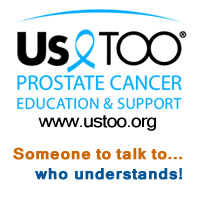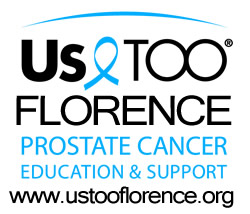|
||||||||
| Home | News You Can Use |
About Us TOO Florence |
Personal Journeys | Slideshows | Contact Us | |||
| Each man's Journey is listed under his BASIC treatment. When you click on one of the names to read a particular Journey, you may see one or more different treatments in bold lettering immediately above the Journey text. You will see (Recurrence) if they are due to a recurrence. Otherwise, they will be treatments used in conjunction with the basic treatment, i.e. Lupron with External Beam Radiation or External Beam Radiation with HDRT/Brachytherapy, etc. | |
Active Surveillance Alternative (Natural) Therapy Cryoablation - Freezing Hormone Therapy Radiation - Brachytherapy Radiation - External Beam Radiation - HDRT Surgery - Open Surgery - Robotic |
Back in the 1980s when I was 40 years old, the medical profession hadn't quite reached the PSA testing era. One of the treatment procedures they were doing was massaging the prostate. I don't know for sure why they did that nor how much good it actually did. Twenty years later when I moved to Florence at the age of 60, I started having PSA tests done. My PSA was a respectable 1 or 2 at that time. However, it gradually climbed upward and then in 2009 took a jump from 4.1 to 5.2. I was under the care of Urologist Dr. Bryan Mehlhaff at that time, and that jump in my PSA along with his finding that my prostate was growing in size left us with only one option. That was to find out what was going on and the only way to do that was with a biopsy of the prostate. I had three cores out of 12 that were cancerous with a Gleason Score of 6 (3+3), involving 5 percent of the biopsy. That wasn't what my wife, Ursula, and I wanted to hear, but it left us with no choice but to face it head on. Fortunately, we had caught it early and it was non-aggressive. That diagnosis started us on a crash course - learning everything we could about prostate cancer. In addition to discussing the different treatment options with Dr. Mehlhaff, we took advantage of the Us TOO Prostate Cancer Support Group and attended meetings to get personal information about the various treatments from men who had actually received them. They share so readily and provide a wonderful resource for men in our community who are diagnosed with prostate cancer. My first concern in meeting with Dr. Mehlhaff was that my only option was to have my prostate surgically removed. However, based on my biopsy results, he recommended meeting with Dr. Barry Blyton at the Oregon Urology Institute's Radiation Center. Our discussion with Dr. Blyton put us at ease and convinced us that the best treatment for me would be external beam radiation (IGRT). In my case, which seemed to be unlike most others, I felt totally useless during my treatments because they left me very tired. I would get home and do nothing but lay around. That seemed like an eternity since my radiation schedule called for 45 treatments or nine weeks of Monday to Friday. My energy finally came back about three weeks after I was through with the therapy. Like other men before me, my radiation treatments were at OUI's radiation center in Springfield, which meant being at Peace Harbor Hospital to catch the much-praised Friends of Florence Bus at 8 a.m. Once we arrived at the radiation center, it was a quick change for treatment, the treatment itself, another quick change and back on the bus for the return ride to Florence . We would usually be back between noon and 1 p.m. My treatments concluded in June 2010 and three months later my PSA had dropped to 1.5. My next PSA test is scheduled for December. So far I have been very satisfied. My energy is back and my PSA has dropped like it should. I do know that since I still have my prostate, my PSA will never be "undetectable" as in the case of those who undergo surgical removal of their prostate. That's not anything that I am concerned about; it's just one of the resulting differences between surgery and radiation. Mine is doing exactly what it is supposed to do and I am delighted with that. |
| www.ustooflorence.org Copyright © 2010 - 2025 | |

